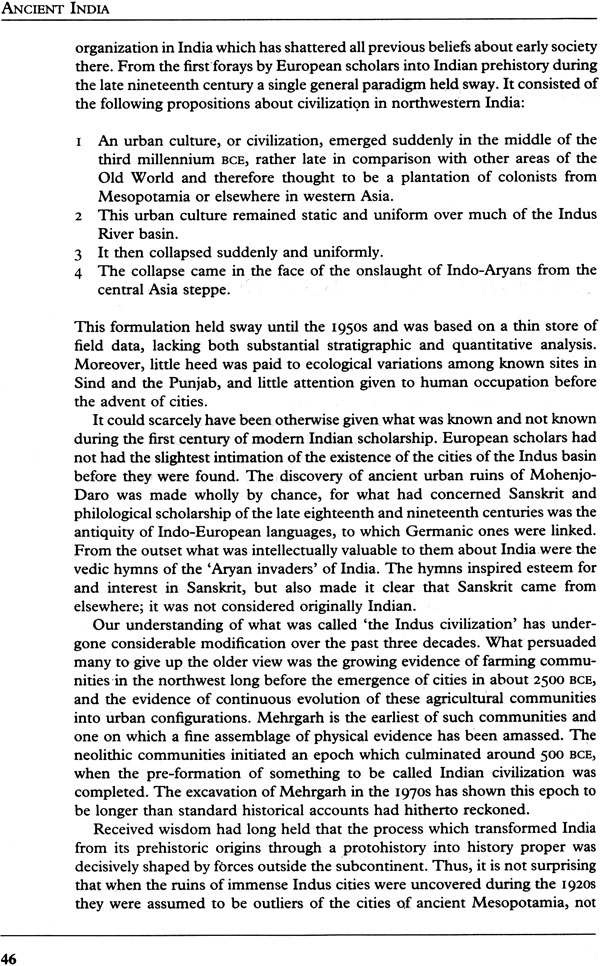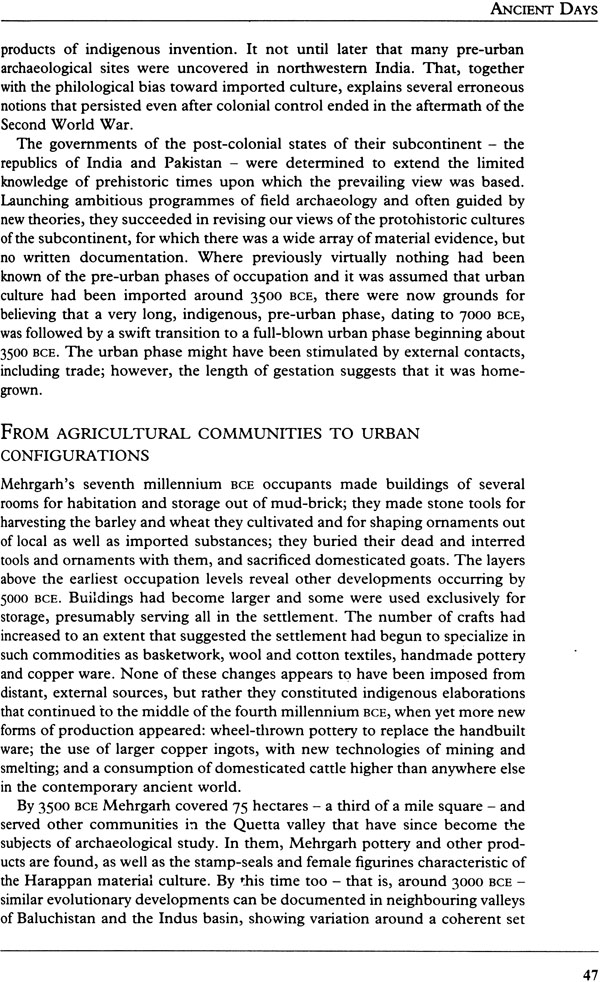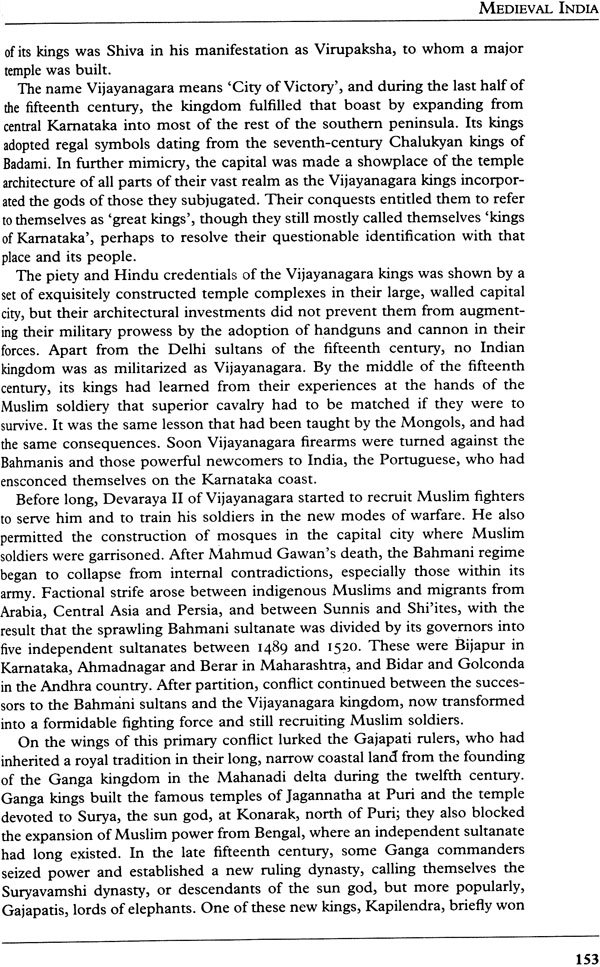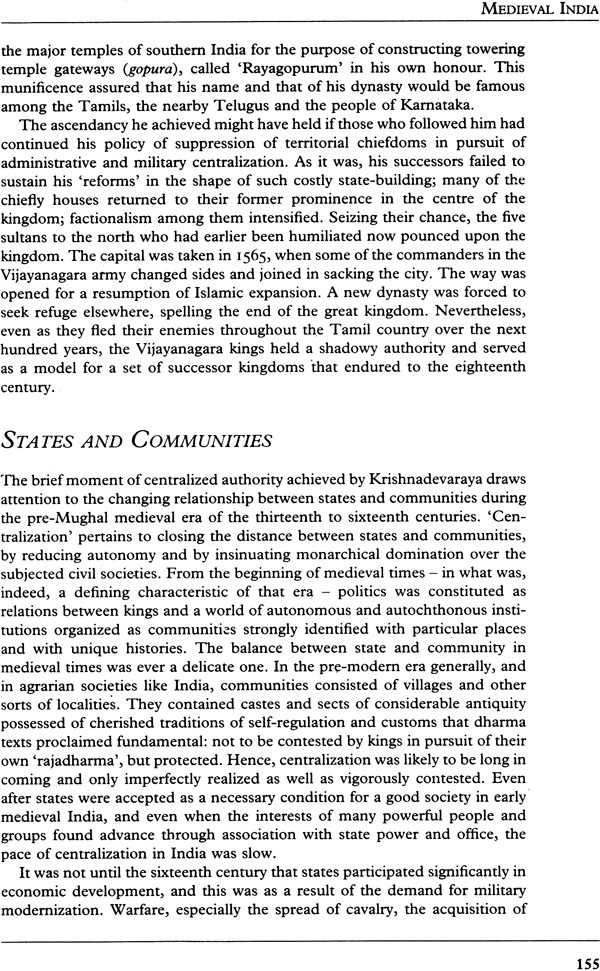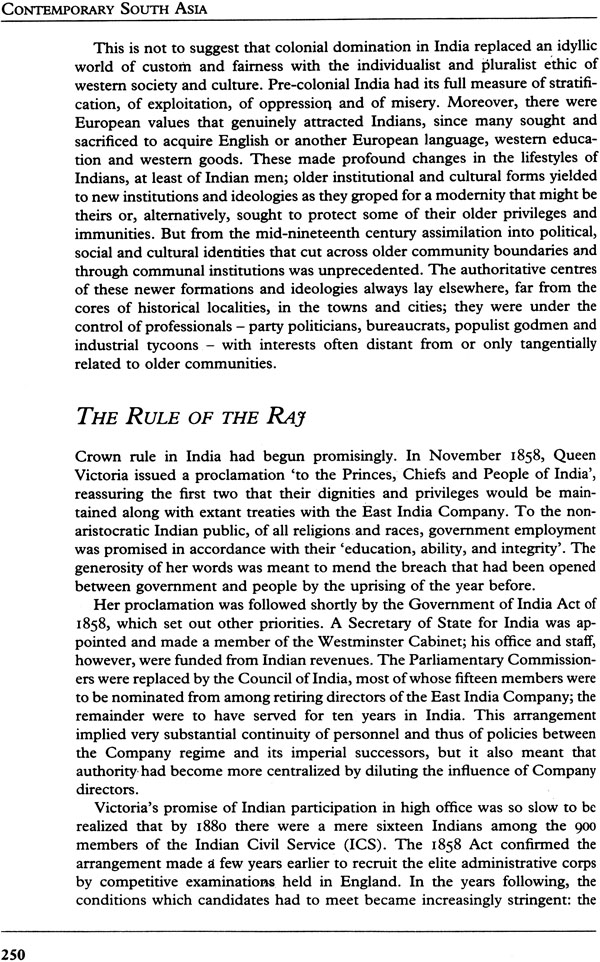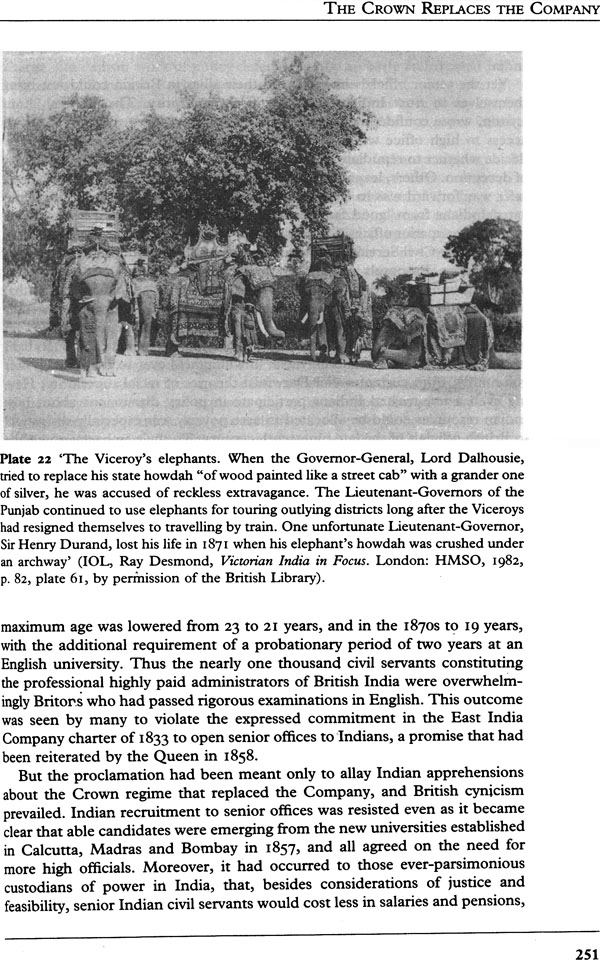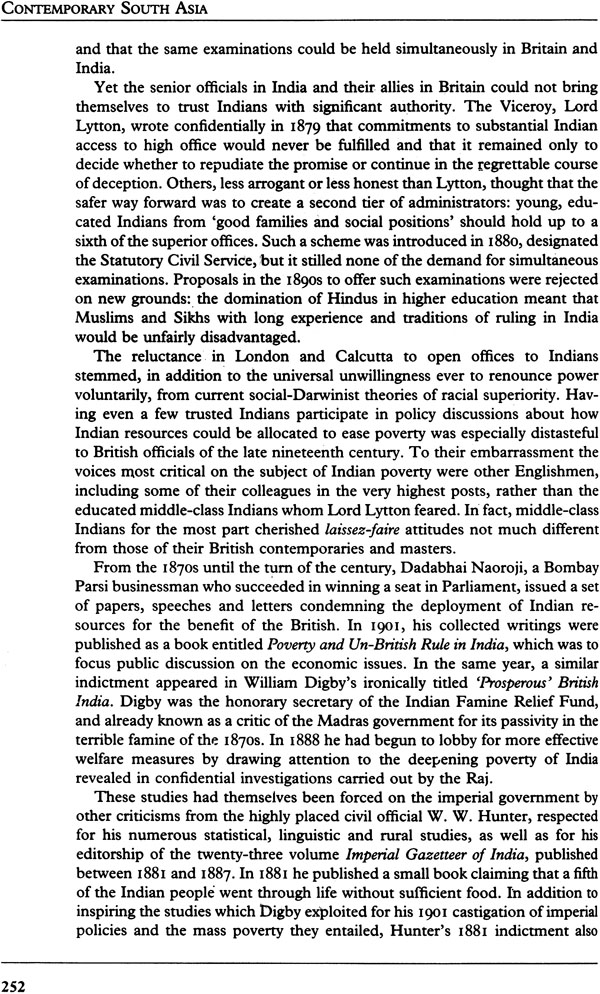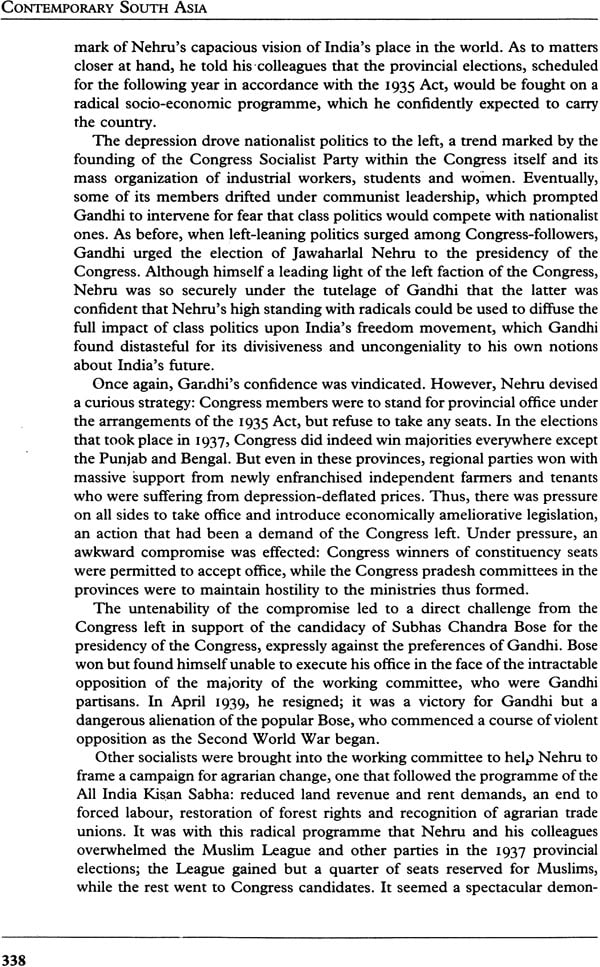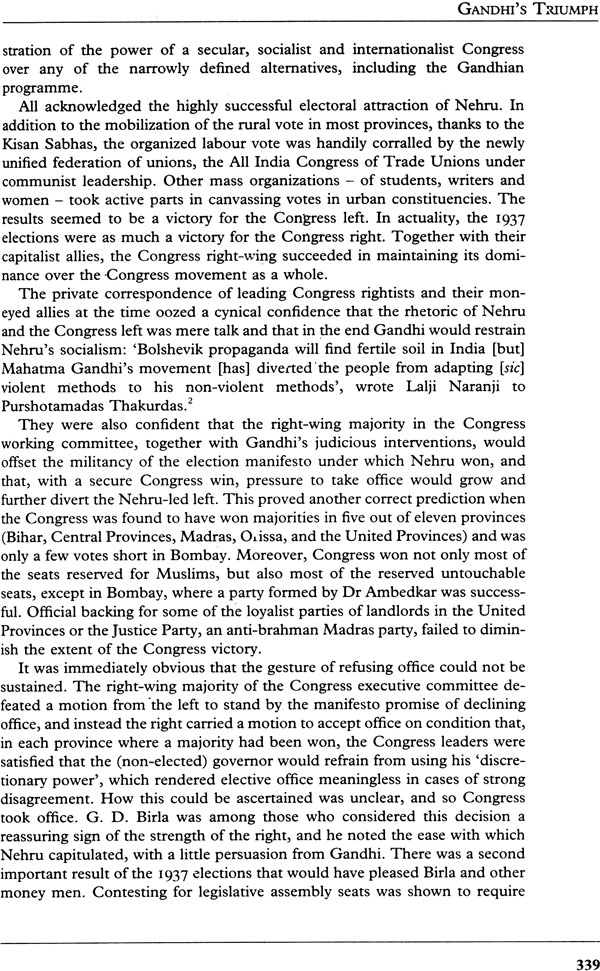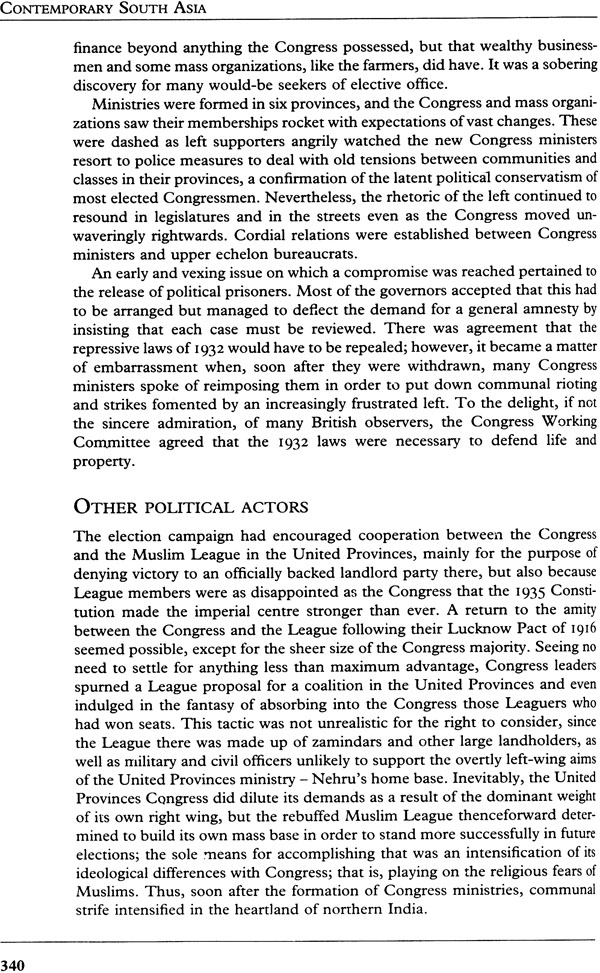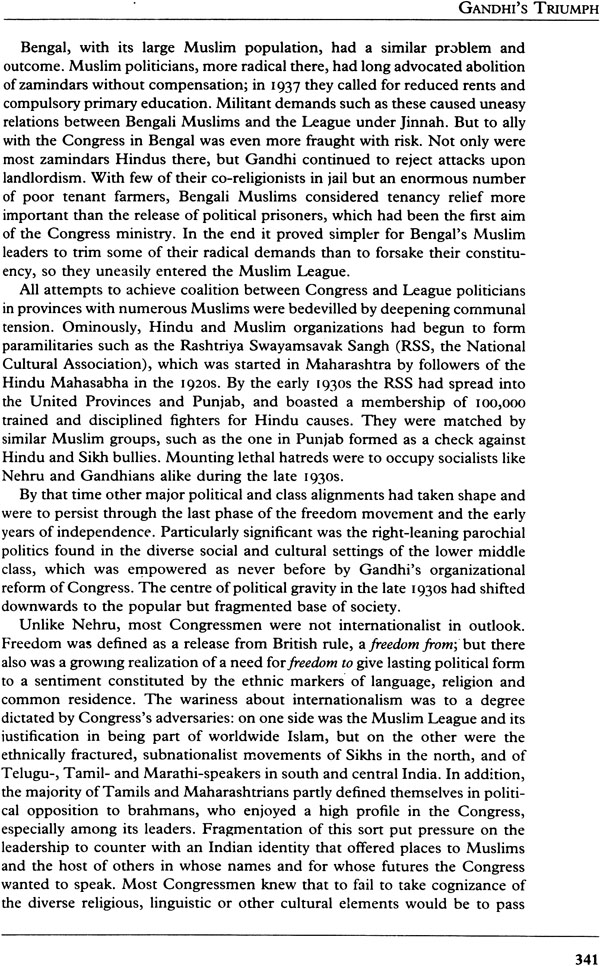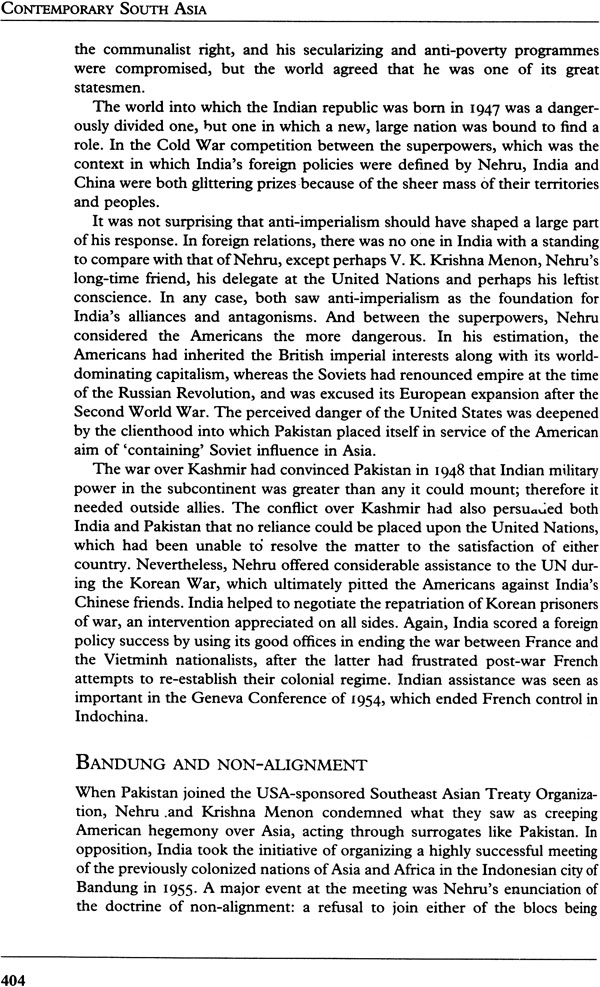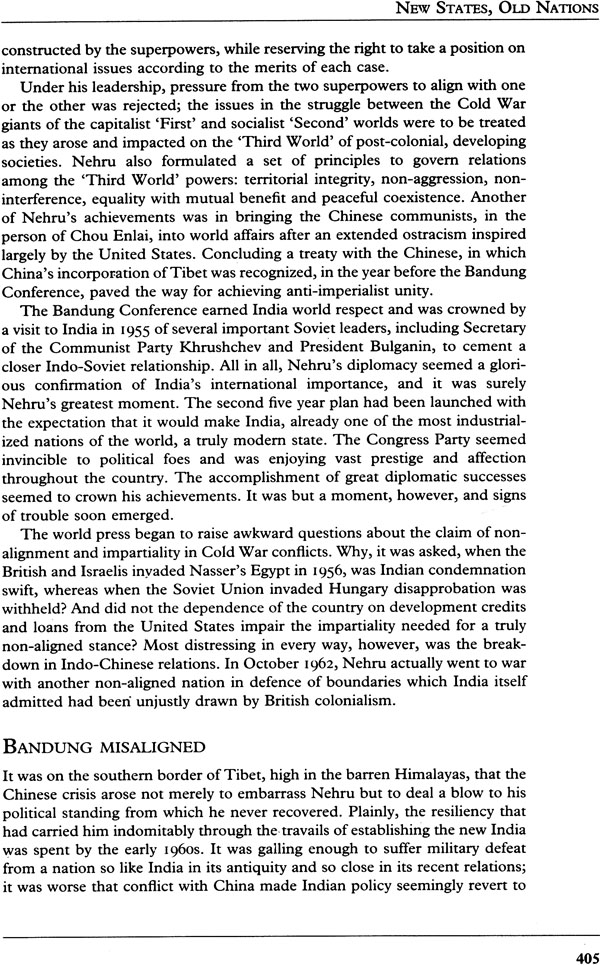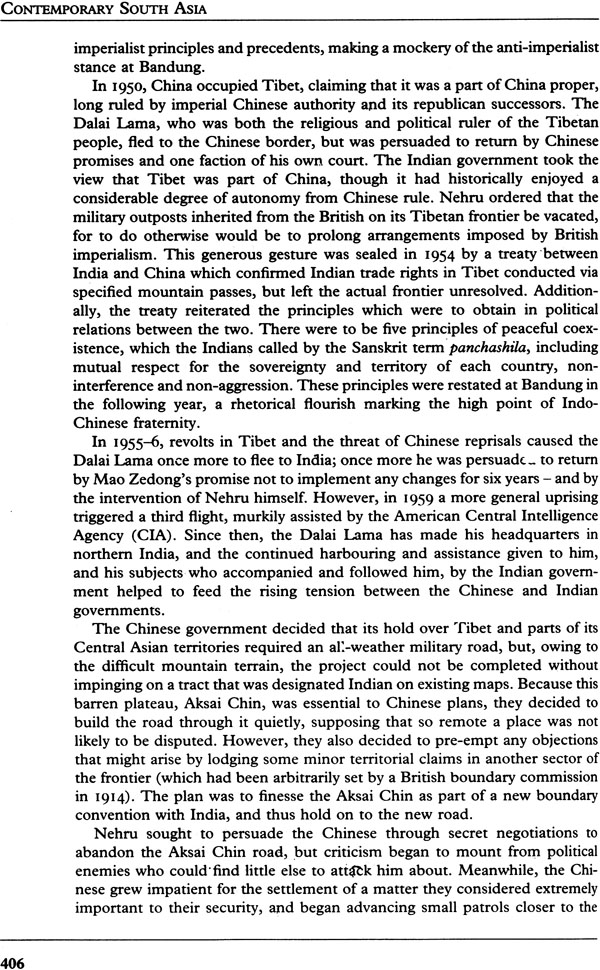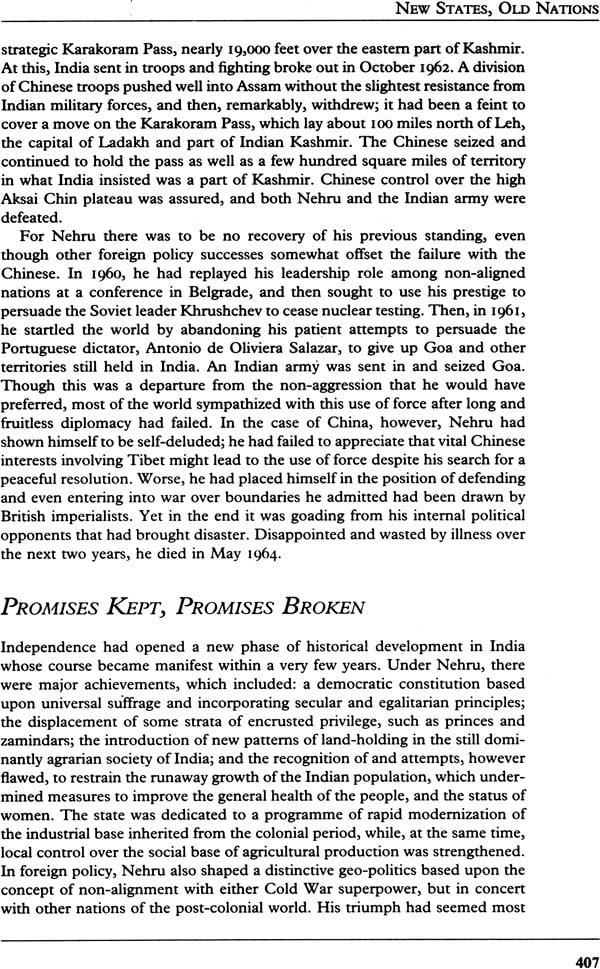
A History of India
Book Specification
| Item Code: | NAH207 |
| Author: | Burton Stein |
| Publisher: | Oxford India Paperbacks |
| Language: | English |
| Edition: | 2012 |
| ISBN: | 9780195662993 |
| Pages: | 446 (Throughout B/W Illustrations) |
| Cover: | Paperback |
| Other Details | 9.5 inch X 6 inch |
| Weight | 540 gm |
Book Description
Tracing the development of Indian society, culture, and polity from prehistoric times to the present, this classic provides a comprehensive yet masterly narrative of the history of the subcontinent. Incorporating wide-ranging research, including the author’s own work on south India, it explores the tensions between communities and states, cultures and politics, and ideas and institutions in the region and the world. The volume also provides an engaging account of contemporary issues like states’ reorganization, planning, population problems, centre-state relations, secularism, gender, and ecology reflecting Burton Stein’s lifelong personal involvement with the Indian subcontinent. Connecting contemporary India with its rich and varied past, this landmark text will be indispensable for everyone concerned with the history of the subcontinent.
Burton Stein was Professorial Research Associate in History at the School of Oriental and African Studies, London.
Writing history involves the selective compression of time; recency has a decided priority. Only a fraction of the number of pages given to the contemporary period of less than two centuries are devoted here to tracing the formation of Indian civilization, from about 7000 BCE to 500 CE. This is often the case for general histories and 'the practice may be justified on the grounds that for writer and reader alike the more recent is often more familiar as well as better documented. In addition, the historian of the present necessarily applies the tools and methods peculiar to his or her own time. All of this suggests that books of history could be read from the present backwards to the past, in the way they are implicitly framed if not actually written.
In addition to distortion in time resulting from uneven proportions of the extant historical evidence, a selective factor is at work which has much to do with the interests and knowledge of historians within each time period, with their ideas of what at each point in time is significant for developments that subsequently took place. And, finally, it must be admitted that a selection is made of that material which seems to the historian most curious and engaging. Thus a book of history is something like a building where the historian and reader stand outside and peer into the windows, one after another, and find each sometimes murky, sometimes curtained, sometimes giving on to dramatic scenes, and sometimes on to settings of the most humdrum sort. We can only make a few inferences about what lies within the walls between, and the historian chooses which windows to linger over. This, then, is a personal 'take'.
Although historians may view and even create their histories back-to-front, the results of this view are presented here, for readability, as a kind of narrative, perhaps even as an epic drama nine thousand years long, with a monumental setting, cast of characters and even a denouement: the present. By way of prologue, this chapter will first introduce the setting by discussing India as a physical landform. We shall then consider the characters by looking, not at individuals, but at the roles they play when organized into communities and states and the ways in which community and state exclude, coexist with and modify each other. It must be borne in mind that the discussion of community and state is not a synopsis of the history to follow; it is intended merely as a description of the political contexts in which that action will take place.
The Physical Setting
In addition to the distortion of time, writing history also invites a distortion of familiar shapes. In the case of the Indian subcontinent, the familiar shape at first glance resembles a triangle or diamond hanging with its apex to the south. Much of it, however, is pressed up against the Asian landmass. The area that is modern Pakistan faces the northwest, from which numerous invaders and settlers penetrated the territory. It is bounded to the north by the Himalaya Mountains, the highest in the world, and by progressively lower flanking ranges which reach to the sea to the east and west. To the east, it nestles up against Myanmar (Burma) in the form of Assam and the recently created Bangladesh. The southern tip of the triangle or diamond terminates at Kanyakumari (Cape Comorin). To the east and to the west of this peninsula are the Arabian Sea and the Bay of Bengal, gulfs of the Indian Ocean. Beyond the Bay of Bengal lie the islands and peninsulas that constitute Southeast Asia, which historically has had close commercial and cultural links with the Indian mainland.
As a landform, the Indian subcontinent has not changed over the course of human history, but as a concept what we will call India did not always appear as it does on modern maps. The mountain ranges separating the landmass defined by the Indo-Gangetic river systems have never impeded the passage of people and their products, material and intellectual; from the era before there were datable documents we have inherited an orally preserved body of literature and archaeological evidence of continuous relations between the people of the Indus region and those of western and central Asia. Artefacts found on scattered sites connect the early cities of western India with those of Mesopotamia in south western Asia from about 3000 BCE. Shared hymns connect Aryan settlers south of the Himalayas with Indo-European speakers of the Iranian plateau from whom they separated around 2000 BCE. Thus an accurate depiction of early 'India' would extend well into central Asia and Iran (while attenuating the links between those living in the Indus region and the peninsula). Moreover, the extension of India to the northwest, and a mental map to reflect this, persisted well into medieval times. India shared with the Iranian world to the west a common hazard from and reaction to Mongols and Afghans, to whom must be attributed significant influence upon both Indians and Iranians.
If the conjectural map of India can be altered to encompass western Asia and Iran, a similar reshaping of the familiar inverted triangle of the subcontinent occurs to the southeast. Historical contacts with Southeast Asia date from the time of the Mauryan king Ashoka, when Buddhist missionaries were sent to Sri Lanka and beyond. By the early years of the common era our mental map of India must take in many places to the south and in- dude kingdoms on the mainland and in the islands to the southeast which were the beneficiaries of a transfer of Indic cultural elements and a rich trade with the Pallavas and Cholas of the southern peninsula. Accordingly, the Pallavan capital of Kanchipuram and the Chola capitals at Tanjavur or Gangaikondacholapuram, in their respective times, might be considered centres of an extended Indian polity that reached well beyond the shores of the subcontinent. It was from these shores and those across the peninsula in Malabar that Islam, too, was carried to the Malaysian peninsula and the Indonesian archipelago in later times. All of this points to relations as dense; significant and enduring as those between regions within the subcontinent as conventionally viewed, and the historical imagination must be taught to adjust the mind's map to register these interactions.
If we look at the familiar diamond in geological cross-section, however, the subcontinent is' rather like a wedge, the broad end plunging under the Asian supercontinent, and pushing up the central Asian plateau. The separation of the subcontinent from the rest of Asia is also evident geologically. A broad band of recent un consolidated sediments separates the bedrock of older deposits to the north and to the south. This and the still increasing height of the Himalayas are evidence of the continuing northward tectonic drift of a land mass which aeons ago was 3 completely detached island continent, and is now undergoing progressive (though slow) subduction under the Asian mainland.
Historically and prehistorically, west Asian peoples have drifted or thundered into the Indian subcontinent from what is now Iran and Central Asia, whose rulers have even occasionally, as in the case of the Persian Achaemenids (sixth to fourth centuries BCE), tried to assimilate parts of the subcontinent. The mountainous isolation from Tibet, however, was so much sharper that only once, early in the twentieth century, was it successfully invaded from India.
Climate
The climate of the Indian subcontinent is exceedingly variegated, ranging from the snow-capped Himalayas to the baking plains of the north and the hot humid coastal plains of the south, from the Thal and Thar deserts in the northwest to the abundantly watered regions of the northeast and the south- west. South of the Himalayas runs the broad continuous band of the Indus and Ganges river plains, whose connectedness played such a large role in enabling the rise of early empires. Further south, ranges of mountains and plateaus run down the peninsula to the southern tip and tend to compartmentalize the terrain of the whole of peninsular India. These features made for the greater historical isolation and smaller political units of the south compared to the north. Thus, as will be seen, physiography shaped the political as well as the economic and social history of the people.
India is monsoonal, swept by the rain-bearing clouds that move seasonally across Asia, so that most of its rainfall occurs within a period of only a few months. The natural maximum precipitation of the subcontinent occurs in winter in the northwest, in summer across the broad centre and on the west coast, and in October and November on the eastern peninsula and Sri Lanka.
| List of Illustrations | viii | |
| List of Maps | x | |
| Acknowledgements | xi | |
| Note on the Maps and Spelling | xiii | |
| Part I | 1 | |
| Extended Reading | 2 | |
| 1 | Introduction | 5 |
| The Physical Setting | 6 | |
| The Social Setting | 13 | |
| Resituating Communities and States | 21 | |
| Historian’s Choice | 35 | |
| Part II Ancient India | 37 | |
| Chronology | 38 | |
| Extended Reading | 39 | |
| 2 | Ancient Days | 45 |
| The Pre-formation of Indian Civilization | 45 | |
| Vedic Culture | 52 | |
| Political and Religious Developments | 58 | |
| Religion in the Later Vedic Period | 64 | |
| The Nature of the Mauryan Kingdom | 73 | |
| Towards the Classical Pattern | 79 | |
| Early Hinduism | 83 | |
| Developments in the South | 89 | |
| The Age of the Early Empires | 90 | |
| The Gupta Classical Pattern | 95 | |
| The Classical Pattern Elaborated and Extended: the South | 100 | |
| Part III Medieval And Early Modern India | 105 | |
| Chronology | 106 | |
| Extended Reading | 107 | |
| 3 | Medieval India | 111 |
| Introduction | 111 | |
| Medieval Kingdoms | 116 | |
| The Role of the Southern Kingdoms | 129 | |
| The Advent of Islam | 134 | |
| The Indian Development of Islam | 143 | |
| The Deccan and the South | 150 | |
| Vijayanagara | 152 | |
| States and Communities | 155 | |
| 4 | Early Modern India | 160 |
| Introduction | 160 | |
| The Mughal Empire | 164 | |
| The Wars of the Mughal Succession | 176 | |
| The Last Act of the Mughals | 184 | |
| The Maratha Moment | 189 | |
| The Shadow of Europe | 197 | |
| 5 | The East India Company | 201 |
| Introduction | 201 | |
| The Joint Trajectory of Development | 207 | |
| The Company Perpetuates the Past | 216 | |
| The Emergence of a New Order | 220 | |
| Mutiny and Revolt | 226 | |
| Late Company Rule | 227 | |
| Part IV Contemporary South Asia | 229 | |
| Chronology | 230 | |
| Extended Reading | 230 | |
| 6 | The Crown Replaces the Company | 239 |
| The Contemporary State | 239 | |
| After the Mutiny | 241 | |
| The Rule of the Raj | 250 | |
| The Political Economy of the Late Nineteenth Century | 258 | |
| Cultural Change, Education and New Classes | 264 | |
| The Politicization of Class, Caste and Gender | 273 | |
| 7 | Towards Freedom | 284 |
| Two Types of Nationalism | 284 | |
| Early Congress and Its Adversaries | 287 | |
| War, Sacrifice and Mass Political Mobilization | 297 | |
| Imperialism’s Paradoxical Enemy | 299 | |
| The First Campaigns | 305 | |
| Between Campaigns | 310 | |
| Conditions for a New Politics | 317 | |
| 8 | Gandhi’s Triumph | 319 |
| Civil Disobedience | 319 | |
| The Left in Politics | 336 | |
| The Right Prevails | 343 | |
| War and the Last Act Begins | 349 | |
| The Bitter Victory of Partition | 358 | |
| 9 | New States, Old Nations | 367 |
| Territorial Passage | 367 | |
| The Promises of Independence | 368 | |
| Pakistan in Parallel | 378 | |
| The Green Revolution: Promise of Plenty | 387 | |
| Environmental Problems, Old and New | 388 | |
| The Condition of Women: Broken Promises | 395 | |
| Communal Politics: Shattered Pluralism | 399 | |
| India and the World | 403 | |
| Promises Kept, Promises Broken | 407 | |
| Glossary of Non-English Terms | 409 | |
| Persons | 414 | |
| Notes | 417 | |
| Burton Stein (I August 1926 to 26 April 1996) | 420 | |
| Index | 426 |

